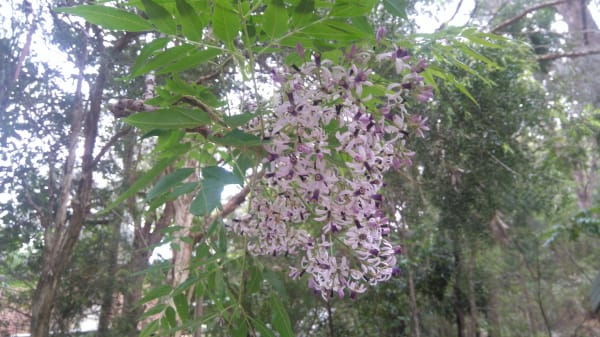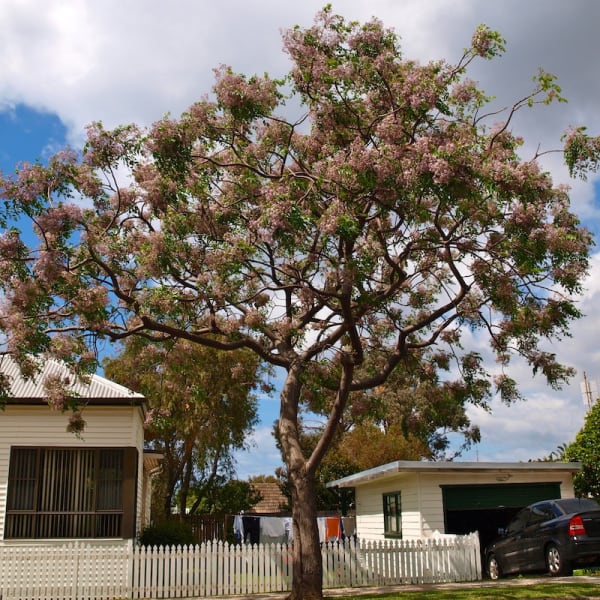The White Cedar (Melia azedarach) is one of the loveliest of the local trees, and also one of the toughest of the rainforest species. And it's flowering (and in some cases fruiting) right now across the Illawarra region.
The beautiful picture below, taken by Peter Butler a few years back, gives a sense of how appealing the flowers of this tree are. In combinations of white, pinks and lilacs, they appear in large panicles (flower clusters), and can be numerous in a good year, half-covering the tree's canopy.

In the 1970s, a heyday for planting native species, White Cedar was an extremely popular tree for landscaping, including on school grounds, right across Australia. There are many mature trees in Perth, Western Australia even now, although it's not indigenous to WA (and the local black cockatoos are quite grateful for a feed on the fruit.)
It has perhaps suffered somewhat since the 70s, as some suboptimal experiences seem to have fed into a current tendency to focus on the negatives. And there are a few negatives. The yellow-brown fruit are poisonous to humans if ingested, and in some conditions the tree can fall prey to the White Cedar Moth (Leptocneria reducta), which can make short work of the foliage through mass feedings overnight.
That said, White Cedar is a deciduous tree, so moth larvae eating the foliage aren't a huge problem. They can also damage the growing tip of young plants, though, and this can be more serious or even fatal to affected plants. Luckily it's an incredibly common tree, with excellent germination of the seed. In suitably sunny areas where seed has been distributed (by birds or by humans), many young seedlings and saplings will appear.

The well-known negatives of this small tree should be factored into decision-making about its role in bush regeneration and landscaping, but they are far from the full story.
White Cedar has many positives: its wide distribution, adaptability, relatively small size, and deciduousness are all points in favour for using this as in urban gardens and landscaping.
It's also a bit of a biodiversity bonanza, with the fruit being attractive to a very large number of birds, including the Australian King Parrot, Emerald Dove, Australasian Figbird, Green Catbird, Lewin's Honeyeater, Pied Currawong, Fruit Dove, Wonga Pigeon, and White-headed Pigeon. The threatened Grey-headed Flying Fox also likes this tree, for the nectar produced by the flowers. And of course from a biodiversity perspective, even the White Cedar Moth is part of the picture!





